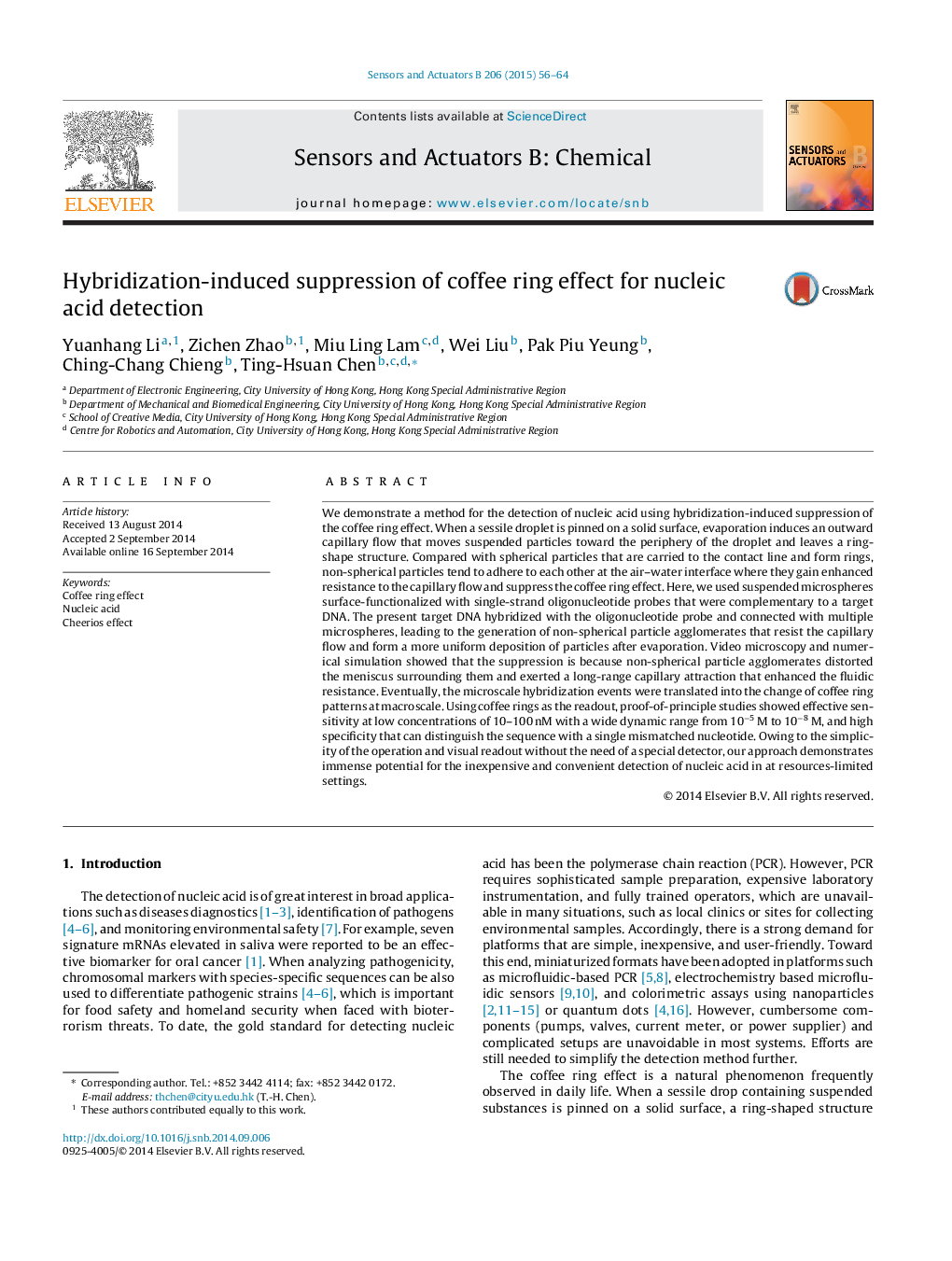| کد مقاله | کد نشریه | سال انتشار | مقاله انگلیسی | نسخه تمام متن |
|---|---|---|---|---|
| 744341 | 1462084 | 2015 | 9 صفحه PDF | دانلود رایگان |
• Hybridization leads to particle agglomerates which suppresses the coffee ring effect.
• Coffee ring patterns as readouts provide detection with simple and user-friendly interface.
• Suppression of the coffee ring effect is modeled via distorted meniscus at air–water interface.
We demonstrate a method for the detection of nucleic acid using hybridization-induced suppression of the coffee ring effect. When a sessile droplet is pinned on a solid surface, evaporation induces an outward capillary flow that moves suspended particles toward the periphery of the droplet and leaves a ring-shape structure. Compared with spherical particles that are carried to the contact line and form rings, non-spherical particles tend to adhere to each other at the air–water interface where they gain enhanced resistance to the capillary flow and suppress the coffee ring effect. Here, we used suspended microspheres surface-functionalized with single-strand oligonucleotide probes that were complementary to a target DNA. The present target DNA hybridized with the oligonucleotide probe and connected with multiple microspheres, leading to the generation of non-spherical particle agglomerates that resist the capillary flow and form a more uniform deposition of particles after evaporation. Video microscopy and numerical simulation showed that the suppression is because non-spherical particle agglomerates distorted the meniscus surrounding them and exerted a long-range capillary attraction that enhanced the fluidic resistance. Eventually, the microscale hybridization events were translated into the change of coffee ring patterns at macroscale. Using coffee rings as the readout, proof-of-principle studies showed effective sensitivity at low concentrations of 10–100 nM with a wide dynamic range from 10−5 M to 10−8 M, and high specificity that can distinguish the sequence with a single mismatched nucleotide. Owing to the simplicity of the operation and visual readout without the need of a special detector, our approach demonstrates immense potential for the inexpensive and convenient detection of nucleic acid in at resources-limited settings.
Journal: Sensors and Actuators B: Chemical - Volume 206, January 2015, Pages 56–64
